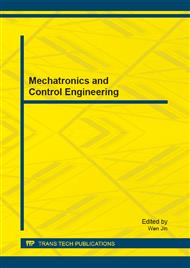p.33
p.38
p.45
p.50
p.55
p.59
p.64
p.69
p.74
Optimal Design for Micromixer Using Macromodel Based on Artificial Neural Networks
Abstract:
The micromixer device is modeled using artificial neural networks trained with finite element simulations of the underlying incompressible Navier-Stokes and mass transport PDEs. The neural networks design is based on a three layers perceptron with one input layer, one nonlinear hidden layer and one linear output layer. The neural networks can map the micromixer behavior into a set of analytical performance functions parameterized by the systems physical variables. The macromodel has been extracted from training output of the artificial neural networks. Three design variables, i.e., the flow velocity, the channel width, and the numbers of the mixing unit are selected for model design. The mixing index at the end of the serpentine channels is employed as the objective function. The macromodel has been validated with numerical simulations. It can be demonstrated that this macromodel should facilitate the design of microfluidic device with sophisticated channels networks.
Info:
Periodical:
Pages:
55-58
Citation:
Online since:
July 2013
Authors:
Keywords:
Price:
Сopyright:
© 2013 Trans Tech Publications Ltd. All Rights Reserved
Share:
Citation:


